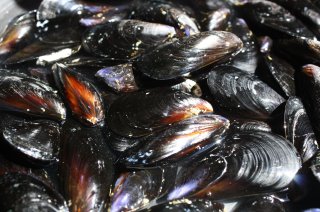
category_news
Marine based biomass as a source of protein and health-promoting compounds
In the development of circular and climate neutral food, feed and non-food applications, low trophic marine biomass will play an important role. Low trophic marine species are positioned low in the food chain, like mussels, do not require land or fresh water and obtain their nutrition directly from their environment.
In addition, mussel farming in hanging cultures stimulates biodiversity, takes up relatively little space and energy and does not physically disturb the seabed. Mussels fit well into a circular food system.
- Unfortunately, your cookie settings do not allow videos to be displayed. - check your settings
Great potential of mussels
The potential of mussels is currently utilized to a limited extent. They are full of bioactive components such as vitamins, small proteins and omega-3 fatty acids. Research has shown that bioactive components in mussels are able to alleviate anaemia in sole and can help rats with arthritis. The potential for humans is promising, and includes the prevention of anaemia, cardiovascular disease, anti-inflammatory effects, and relieving arthritis and diabetes. Next to mussels, also other low trophic marine species show great potential as a source of protein and health-promoting compounds.
Fractionation
To utilize high value ingredients from low trophic marine biomass, the biomass is separated into several fractions. These fractions can be used as ingredients for food, food supplements, or to replace raw or fresh feeds in high value compound diets in aquaculture. The approach can develop new sustainable revenue models with access to novel markets within a circular economy.
Want to partner up?
We want to utilise this opportunity given by low trophic marine based biomass, together with farmers and producers of supplements, food and aquafeeds. Are you interested? Please reach out to the contact person on this page, researcher Jeroen Kals.